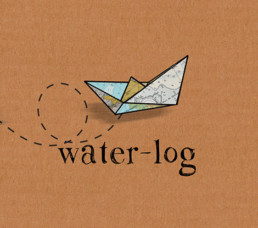Traditionally there are certain laws or superstitions that sailors like to live by. “No bananas on a boat… don’t let a woman onboard… never leave port on a Friday…” All fine examples of dubious seafaring wisdom that we choose to bluntly and stubbornly ignore.
However, our years on the waves have distilled one golden rule that we try not to disobey: never sail to a deadline.
So why would anyone be tempted to have a cruising cut-off date and why would it be a problem? Well, often it’s to do with non-sailing plans, friends flying in for a visit, perhaps a change of crew, or picking up of vital boat parts that force the need to be in exactly that place on a certain day. The catch is that life at sea is unpredictable at the best of times and it’s all too easy to forget to allow enough bagginess in your plans.
The pressure of an impending family holiday, one that means your loved ones have shelled out significant money for and travelled great lengths to arrange, can sometimes make even the most experienced sailor ignore all the normal weather warning signs and take daft risks. “The weather isn’t playing ball but we just HAVE to get to Fiji before the 15th, as that’s when our daughter flies in.” someone bemoaned to me. The next time we heard from them I can assure you that their complaints were far worse as they gave us all the details of a horrendous passage, full of steep and unforgiving seas, raging winds and close to dangerous conditions.
But the real world is one governed by set dates and the importance of schedule, beyond the cruising calendar of storm seasons and trade winds. Despite our hand-crafted, more relaxed lifestyle that we have chosen for ourselves, we have a wide network of friends and family that live by more conventional rules which we also need to respect and adapt to. A friend’s wedding in Mexico saw us making fairly short stops and quick mileage up the Pacific coast, just to allow enough time to get there even if the weather shifted on us. Parents flying the longest stretch possible, from England to New Zealand, ensured that we planned our sailing steps weeks ahead of time, to give us enough wiggle room to cover the necessary sea miles and get set up in a marina yet allowing for the winds to not bend to our plans.
And some crucial dates can catch you by surprise and sneak up out of nowhere. An error with our visas in Indonesia resulted in our realising that the only solution was to quickly cover 200 miles in just a few days along a stretch of coast that we had originally planned to dawdle and linger in, exploring every delightful unspoilt anchorage. However, the need to fly in and out of neighbouring Malaysia meant that there was only one place that we could safely leave the boat unattended, so the sailing was forced to change.
Likewise, when James suddenly developed a hernia shortly before a season that would see us cruising the remote islands of the Western Pacific and the outer atolls of Papua New Guinea, we had to tackle swiftly making port, making appointments and preparing for recovery, all whilst obeying the whims of the ever-fickle weather.
You may be aware that our children have been planned and born as we travel along our sailing journey – something that involves staying good-humoured about any arrangements. We were passage-making up the Central American coast up until I was 7 and a half months pregnant with our first child who then taught us a thing or two about timing when she arrived 3 weeks early. Similarly we were due to haul our yacht out of the water shortly after having our second baby who equally monkeyed with our agenda by appearing 2 weeks late.
Despite the years and the mileage I remain at heart a fair-weather sailor – always happy to choose a more pleasant sailing forecast and adapt my ideas around it, accepting that the winds have far more authority than me. And, equally there are plenty of long-term, liveaboard folks, perhaps with far faster boats than ours, who are happy to push it, to chance the weather or to simply grit their teeth and put up with a lousy passage in order to get to where they need in time. Perhaps that’s why they say that a sailor’s plans are “written in the sand at low tide”, to teach us all the art of flexibility and compromise.
